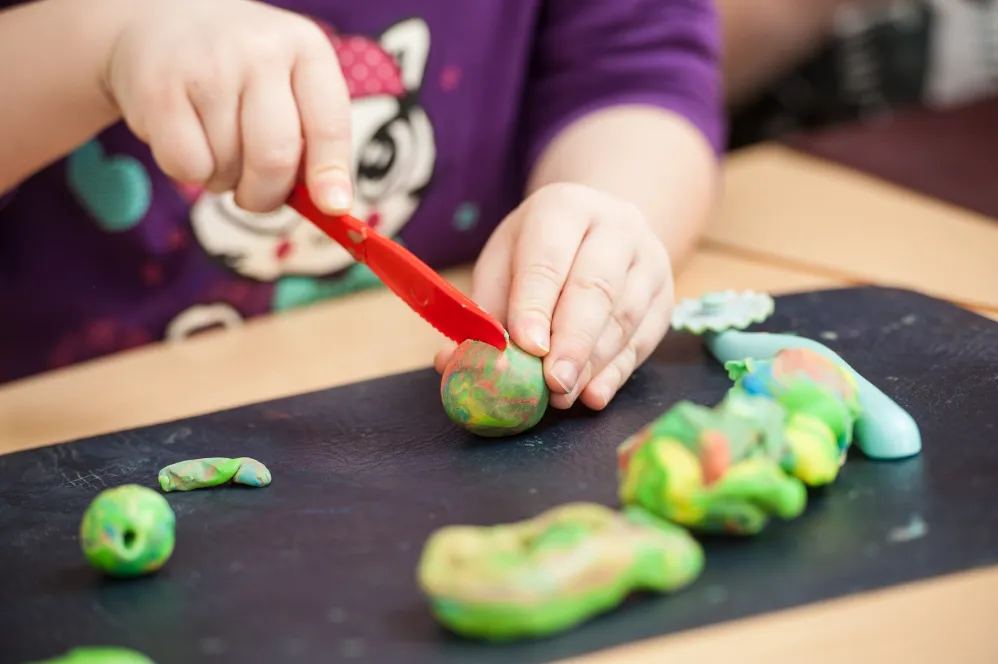Pat Thomson and Chris Hall from the University of Nottingham have written for CLA about their research into arts-rich primary schools, funded by Freelands Foundation.
The term “arts rich” was used by James Catterall to describe a secondary school that offered a suite of arts subjects through to the final year, had an arts faculty, dedicated space and equipment. Catterall’s longitudinal studies suggested strongly that students who attended arts-rich schools were more likely to go to college than their peers who didn’t attend arts-rich schools. We are researching arts-richness in England.
The Researching the Arts in Primary Schools (RAPS) project starts from the premise that educational success against the odds depends on foundations built in the primary years, as – for many – does a long-standing interest in the arts. Our research in arts-rich primary schools seeks to understand both what they do and what they offer to children.
We began by asking arts organisations across the country to nominate primary schools they thought were arts-rich. This produced a list of 187 schools. And, just as the pandemic started, we wrote to these schools inviting them to participate in an initial survey. 76 schools responded. From these responses we learnt that almost all of these arts-rich primary schools:
- Teach art and music to all children, every week, all year
- Regularly teach other arts subjects, with creative writing and drama being the most popular.
- Have at least one specialist arts teacher
- Have some facilities dedicated to the arts
- Have a range of long-standing partnerships with cultural organisations
From our 76 schools we selected 40 to visit. We made sure we had schools in all parts of the country, that served a range of communities and were of different sizes and types.
The first thing we noticed about the schools was how diverse they were. There was no one way to “do” arts-rich. Each school had a distinctive identity which was evident as soon as we walked in; the arts were key to how this identity was expressed in the foyer, in corridors and classrooms and in the playground. As we got to understand the schools better, we learnt that:
- They all had at least one other strategic priority – most common were eco-schools and rights-respecting schools. Because arts subjects encourage what Maxine Greene called ‘wide awakeness to the world’ the arts and the additional priority area worked together.
- All of the schools were strongly connected with their local area and took ‘place-based’ curriculum seriously. The arts were often integral to children learning about the histories, presents and futures of their communities.
- The schools had different ways of teaching the arts. All of them expected some arts to be taught by generalist classroom teachers. Some had enough specialist staff to teach one or two arts subjects during teacher planning time. Specialist teachers also rotated through year groups, team taught and offered both bespoke support and whole school professional development. Some schools bought in part-time specialists. Most worked with arts partners some of the time.
- More than half (25) had child-led Arts Councils which were active in organising arts activities.
- All of the schools offered arts-based clubs which allowed children additional opportunities to extend their knowledge and skills in cross-age groups.
- All of the schools engaged in a range of special arts projects, often public performances and exhibitions, which provided a challenge as well as a way for children to showcase their learning to family and community audiences. Unlike other schools we have been in, these extra-curricular activities were complementary to the core arts curriculum, not a substitute for it.
The final stage of the project was a further round of visits to 22 of the schools to find out more from school leaders and arts leads about the process of becoming and sustaining arts-richness. We matched the 22 schools with 44 comparator schools, identified from the Education Endowment Family of Schools data base as operating in similar contexts. This comparison suggested that there is no penalty in studying the arts. In other words, offering an arts-rich curriculum does not detract from core test results in other areas, a finding that is supported by EEF Arts Randomised Control Trials. Also, although we did not select the schools on the basis of their inspection status, we noted that 19 of the 22 are rated ‘good’ or above, with some coming at the very top of their family of schools. We wonder, then, why more schools don’t aim for art-richness?
The RAPS research will, we hope, shed light on the wide range of ways in which arts-richness can be achieved, clarify the benefits to the whole school and provide convincing reasons why studying the arts is so important to children’s primary education.
Pat Thomson is Professor of Education, School of Education, the University of Nottingham and Chris Hall is Professor Emerita, School of Education, the University of Nottingham. Chris and Pat have together been researching creativity and the arts in schools for two decades. They have blogged about the forty schools on https://artsprimary.com. Their most recent book is Schools and Cultural Citizenship: Arts education for life (Routledge, 2023). The RAPS project is funded by Freelands Foundation. Dr Liam Maloy, children’s music specialist, is the senior researcher working on the RAPS project.




